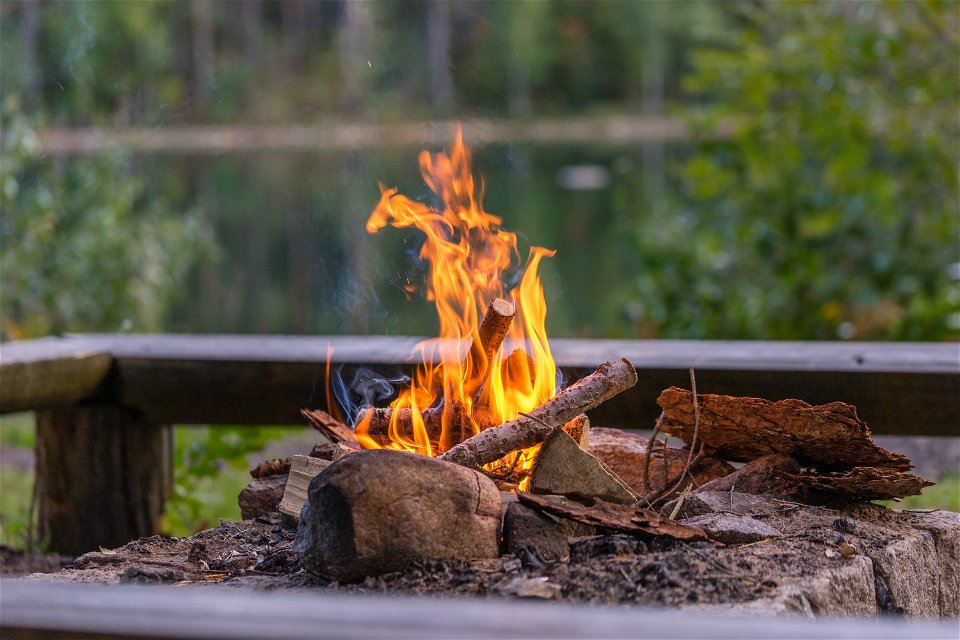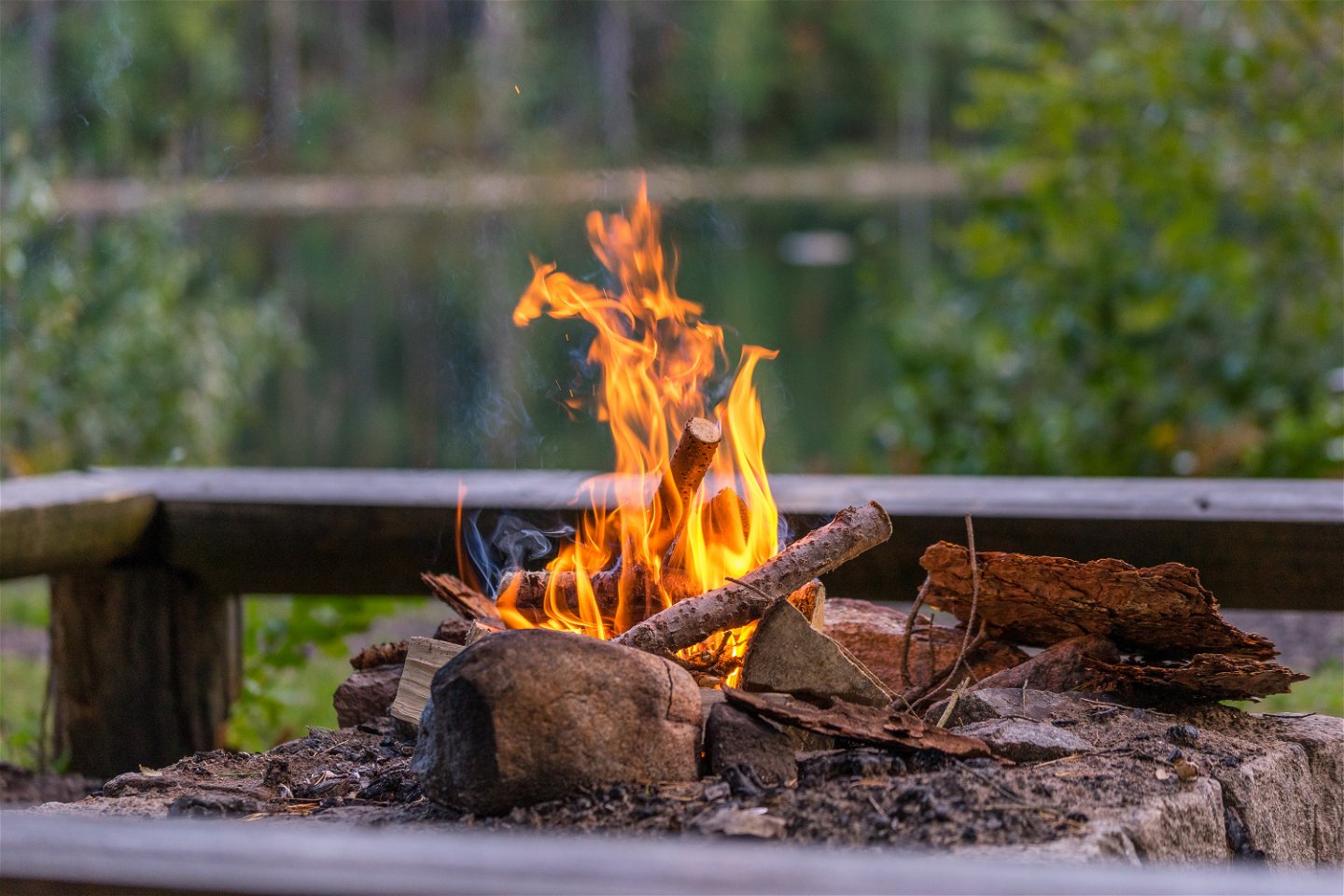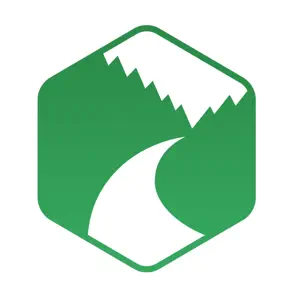Lighting Fires and the Right of Public Access
Images
Lighting Fires and the Right of Public Access
Things to consider when lighting a campfire or barbecue outdoors
Fire has always been fascinating to humans. A crackling campfire enhances the outdoor experience. However, fires can also cause major devastation if not handled correctly. The Right of Public Access (Sw. Allemansrätten) grants no automatic right to light a fire. A fire is your personal responsibility and should only be lit in safe conditions.
Fire bans may be in force at times of high fire risk, the lighting of open fires can be forbidden. The municipality or the county administrative board issue fire bans to prevent forest fires. Information is posted on their websites showing which areas are covered, what is prohibited or allowed, and the period for which the fire ban applies. Information on fire risks and fire bans can also appear in local newspapers and on the radio, at campsites, in tourist information offices, or via the municipal rescue services. Some municipalities and county administrative boards also have special telephone services.
Lighting Fires and the Right of Public Access
It is your responsibility to find out the rules. Fire bans do not normally apply in built up areas. Normally, you are allowed to barbecue in your garden or allotment, in inner courtyards and yards connected to blocks of flats, as well as in parks and certain campgrounds. However, there may be restrictions in place that prohibit barbecues or the lighting of fires in urban areas. Ask the municipality which rules apply. If you are camping in the countryside or wilderness, or staying in a secluded rural area, you should find out what applies for that specific area. It is always your responsibility to find out whether lighting a fire or having a barbecue is allowed in your particular location. If you violate a fire ban you may be fined.
If you light a campfire or barbecue
• Choose the right location
When building a fire, it is important to choose the right location, e.g. on gravel or sand. Whenever possible use a camping stove or a fixed barbecue area. Do not light a fire on peatland, moss, or in humus-rich woodlands. In these places, embers from the fire may penetrate deep into the soil and smoulder for a long time only to flare up later. Also avoid lighting fires near anthills or tree stumps; they are difficult to extinguish if they catch fire. Do not light fires directly on or beside rocks and large stones. They become discoloured and may crack.
• Limit the fire
Keep it small and limit the fire by digging up gravel or placing stones around it.
• Only use appropriate fuel
Appropriate fuel includes fallen branches, twigs, and cones on the ground. You may not use living trees. Using fallen trees as wood is also not permitted. Do not burn rubbish – a campfire is no place for waste incineration. Feel free to bring your own dry firewood so that you can light the fire easily.
• Avoid using disposable grills
Disposable grills can set fire to their surroundings. If you use a disposable grill, it is important that you place it correctly. They become very hot underneath and can cause fires when placed on wooden benches and tables, or in ground vegetation. Always place the disposable grill on a non-combustible surface, such as gravel or sand. Be sure to extinguish it and remember not to leave it outdoors. Always recycle disposable grills, some places have special disposal bins.
• Do not light a fire in windy conditions
Check the wind before you barbecue or light a campfire. Winds can carry sparks into the forest or dry grass and start a fire. If the wind increases, extinguish the fire.
• Make sure there is water to extinguish the fire and embers
You should always have access to water so that you can extinguish the fire and the remaining embers. Even if a fire has burned out the embers need to be properly extinguished
Find out what rules apply in your area
The risk of fire varies across the country. Different things can thus be prohibited in different areas during the same period. For this reason you must always be careful to find out the rules that apply in the specific area where you are located.
You can find information on all fire bans on the municipality, county administrative board or rescue service's websites. Radio Sweden station P4 usually provides information on any risk of fires or fire ban.
County administrative board Örebro
County administrative board Västra Götaland
Special rules for national parks and nature reserves
Lighting fires in national parks and nature reserves is sometimes prohibited regardless of active fire bans. The rules are posted on notice boards in the area. Additional information is available from the municipality or county administrative board. You can also find information on special rules for national parks and nature reserves at www.nationalparksofsweden.se and www.lansstyrelsen.se .
Downloads
Downloads
Contact
Address
Har du frågor om ditt besök i Tiveden kan du ringa till telefon 010-224 86 11 där turistinformatörer från Laxå, Askersund och Karlsborg svarar på dina frågor.
Email address
Laxå kommun
Organization logotype




